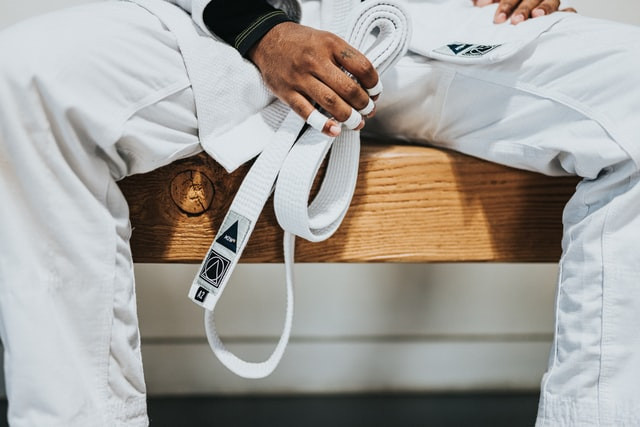Judo, kendo, aikido, karate… Japan has formed, practices and enjoys various martial arts. Although they all seem quite challenging, here are the basics so you can get started with your mental and physical training.
Table of Contents
- What is Budo?
- Well-known Budo Disciplines
- Budo Disciplines You’ve Probably Heard of
- Lesser Known Budo Disciplines
- Conclusion
What is Budo or Japanese Martial Arts?

According to the definition by The Japanese Budo Association, 「武道 budo」 (Japanese martial arts) is:
“a form of Japanese physical culture that has its origins in the ancient tradition of bushidō – literally, “the way of the warrior.””
Budo aims to unify the spirit (heart), technique (skill) and strength (body) as one, teaching discipline and respect to develop one’s character. Unlike games played simply to win, Budo can be understood as having to aim to train one’s mind and body while also building character.
The martial arts listed under Budo are:
jūdō, kendō, kyūdo, sumō, karatedō, aikidō, shōrinji kempō, naginata, and jūkendō.
※ Japanese Budo Association, “The Definition of Budo”
Among the list, there may be ones you’re familiar with, while others perhaps not at all. Let’s take a look at each of them.
Japanese Martial Arts Vocabulary to Know
But before that, let’s go over some basic terminology to know.
-
「~道 ~do」‐ means “way of”
-
「稽古 keiko」 - training; practice; lessons
-
「技 waza」- a technique used in the martial art
-
「道場 dojo」- the facility where “keiko” takes place
-
「道着 dogi」- the uniform used in the martial art
-
「帯 obi」‐ a belt worn over the uniform, such as in judo. Different colors may indicate different rank.
-
「○○流 ○○ryu」- a term used to classify “schools” in martial arts
Writer's Pick
Well-known Budo (Japanese Martial Arts) Disciplines
There are certain Japanese budo disciplines that people all over the world know. Here are the ones most familiar to English speakers.
Sumo 相撲
Sumo wrestling of course is the most famous of all Japanese traditional sports.
It seems simple - the first one to get knocked out of the ring or touches the ground is the loser.
However, there’s years of training, notable ranks, a strict diet and more to the world of sumo.
Read all about it in Sumo Wrestling, Japan’s National Sport.
Judo 柔道

An Olympic sport, this Japanese martial art is known all over the world. 「柔道 Judo」 was established as a martial art in 1882 by Kano Jigoro, “the father of judo”, who took ideas from various schools and added his own ideas and research.
Kano stated that judo goes up to 10-dan, or 10 levels, with exceptional people who can aim for even higher. However, the sport officially only goes up to 10, with very few ever attaining this level of achievement.
The Kodokan is both a dojo and institution aimed to educated people about Judo. Anyone, regardless of nationality, can come practice here. They even offer a list of waza (techniques) which links to their YouTube channel showing each move.
Here’s the famous Seoi-nage, where one pulls and throws their opponent over their back.
Read more about judo and how to practice it in our article Modern Martial Arts: Study Judo in Japan.
Karatedo (Karate) 空手道

「空手道 Karatedo」 also known as 「空手 Karate」is a martial art that originated in Okinawa during the Ryukyu Kingdom era, with various stories about its establishment, even going back to the 15th century. It spread from Okinawa to all over Japan during the Taisho Period. It was officially approved as a Japanese martial art in 1933.
It was initially called 'te' and 'toude', but there are several theories as to when it came to be called 'karate' or 'karatedo'. 「空手 karate」means “empty-handed”.
Karate was included as a sport at the 2020 Tokyo Olympics. In the Olympic Games, the competition was divided into 'kata' and 'kumite'.
Kata is performed alone, and according to the official Olympic website is where
“competitors execute a set of pre-approved choreographed movements, with the winner being declared by a pool of judges”
The accuracy of technique, power, speed, rhythm, balance, etc. are judged.
But what about the competition style depicted in the famous “Karate Kid”?
That would be Kumite, where
“the winner of the three-minute fights is the one who obtains a clear lead of eight points, or the competitor having the highest number of points at time-up.”
A different number of points is awarded based on the waza (technique) used.
※Olympics, “Karate”
There is also a form of Kumite called Full Contact Karate where full-contact, including knockouts, are allowed.
Learn more about karate in general, as well as where you can learn, at the Japan Karate Association’s website.
Budo (Japanese Martial Arts) Disciplines You’ve Probably Heard of
Here are some disciplines you’ve probably heard of but might not be familiar with the details of.
Kendo 剣道
Kendo is a Japanese martial art which is practiced using a bamboo sword and armor. The tools used for kendo were developed during the Edo Period. The discipline was later named 「剣道 kendo」- to study the spiritual aspects of the “way of the sword” - to distinguish it from 「剣術 kenjutsu」or swordsmanship in a technical or combative form.
※All Japan Kendo Federation, “The History of Kendo”
In Kendo, you need the bamboo sword as well as the kendo armor and hakama (kimono). Take a look at how they are used.
In addition to kendo, there are 2 other Japanese martial arts that focus on Japanese swordsmanship.
One is「居合道 iaido」which uses a live blade and revolves around being able to draw a sword with precision and correct technique.
The other is 「杖道 jodo」which uses a long wooden staff to both attack and control the movements of the opponent.
Both, along with kendo, are explained on the All Japan Kendo Federation website.
Kyudo 弓道
「弓道 kyudo」is Japanese archery which is done using a long Japanese bow and while wearing traditional kyudo uniform (usually a white kimono, a black/dark hakama and white socks).
The purpose is not just to hit the target, but like the other martial arts, to discipline your mind and spirit, as the video above explains.
According to the guide on the All Nippon Kyudo Federation website, most dojos provide all the tools necessary for first-timers, so all you have to do is wear comfortable clothes and shoes when you first visit. As you gain experience, you can acquire your own personal equipment necessary for practice.
※ All Nippon Kyudo Federation, “見学・入門”
Aikido 合気道

「合気道 Aikido」was created around 100 years ago in the 1920s, distinguishing itself for several reasons.
One is that
“Aikido is performed by blending with the motion of the attacker and redirecting the force of the attack rather than opposing it head-on.”
※Aikikai Foundation, “About Aikido”
Another is that there are no competitions held for Aikido, as it’s more about training and improving yourself both physically and mentally than it is to beat an opponent.
Lesser Known Budo (Japanese Martial Arts) Disciplines
And last but not least, here are some of the Japanese martial arts that are not usually the first ones to come to mind - or that some people don’t know at all!
Shorinji kempo 少林寺拳法
You may not have heard its name, but you will more likely know the martial arts that inspired it - Shaolin Kung Fu.
In fact, 「少林寺拳法 Shorinji Kenpo」translates to “Shaolin Temple Boxing”. The founder, So Doshin, had traveled around China in his youth, and began to teach this martial art upon his return to Japan, which incorporates Zen Buddhism in its practice. The philosophy aspect, taught to train one’s mind and develop one’s character, is just as important as the physical training.
Worldwide competitions and study sessions are held internationally.
Naginata なぎなた

「なぎなた naginata」is a Japanese martial art whose main tool is a spear - a long curved blade at the end of a long pole. A bamboo version is used in competitions.
This martial art is quite popular with women, as traditionally, these spears were used by female warriors.
Those who practice naginata wear traditional wear similar to that worn for kendo. There are two types of competitions; engi, where a pair performs a choreographed set and shiai (pictured above) where opponents try to strike each other to score points.
※All Japan Naginata Federation, “What’s Naginata?”
Jukendo 柔剣道
「柔剣道 jukendo」is a Japanese martial art that uses a bayonet. It’s quite similar to kendo in both look and practice, of course with distinctions. It is a budo discipline that combines Japanese swordsmanship, spearmanship and the theory of kendo with fencing and bayonets. A wooden bayonet is used in competition.
※All Nippon Jukendo Federation, “What is Jukendo”
It’s much less known than kendo, even in Japan. Take a look at the video above, which explains the martial art, its history and key objectives, in English.
Conclusion
These budo disciplines are vital parts of Japanese traditional culture, and are carefully practiced to this day. They emphasize not just the physical aspect of martial arts, but the mind, health and overall wellness.
Check out the links above for the official federations and organizations of each martial art to get more information, especially about where you can find a dojo to try them out, often for free for the first trial lesson.
We hope you found one (or several) you might be interested in!



































